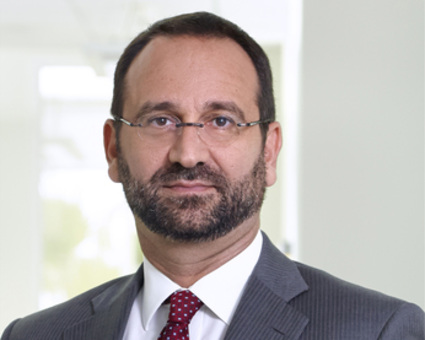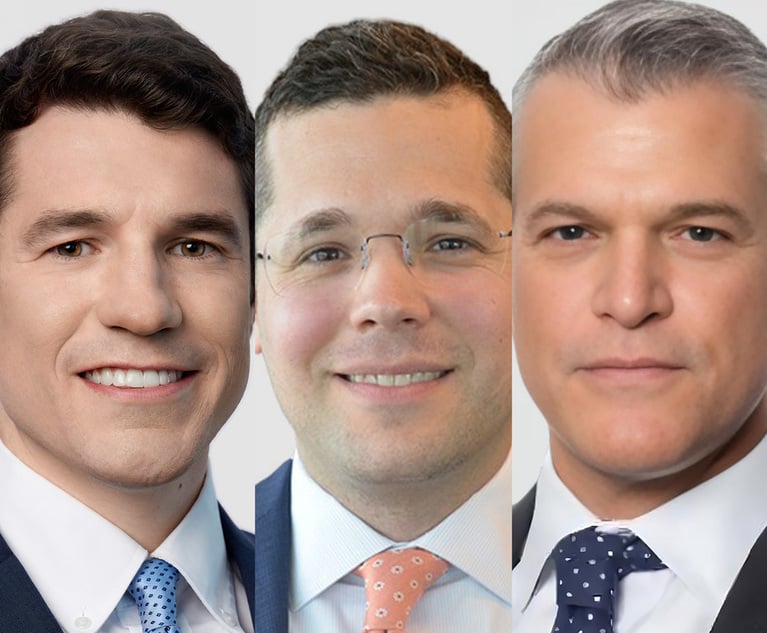Trial Aikido and Bringing Balance to the Courtroom
Every trial lawyer brings his or her own unique life experience and perspective to the trial practice. Much of my perspective and my practice in the courtroom have been forged in the world of the martial arts.
January 16, 2018 at 10:15 AM
4 minute read

Every trial lawyer brings his or her own unique life experience and perspective to the trial practice.
Much of my perspective and my practice in the courtroom have been forged in the world of the martial arts.
I started training in martial arts in the 10th grade and never stopped. From Kyokushin karate I learned the value of self-improvement, discipline and hard training—enduring punishment and fighting hard—harden your body, harden your bones, harden your mind.
After law school, I took up Gōjū-ryū, which literally means hard-soft. Classic Gōjū-ryū is fierce, but like its name foretells, includes soft elements in its technique and philosophy. It's been almost three decades now, and I have trained consistently in this style with my teacher Joseph Kelljchian. He further developed the style and incorporated elements of many other arts, including aikido.
Aikido translated from Japanese means “the way of the harmonious spirit.” In general terms, the aikido master applies “soft” technique to redirect an opponent's strength, use it against him, and find the right balance to turn the tide in the master's favor.
One of the most memorable lessons Master K taught me was to always let my opponent dictate the beating he deserves. He wasn't being macho or boasting, but instead was teaching me to allow my opponent's strength to determine his defeat.
Recently, I gave a talk on “Trial Aikido,” bringing some martial arts wisdom to the 11th Annual Renaissance Symposium on Dec. 1 at the Harvard Club of New York City. The Renaissance Symposium is the Litigation Counsel of America's exclusive annual advanced trial series, where top attorneys speak before and learn from peers in a small group setting.
The first time I witnessed Trial Aikido in action was during my law clerk days. I remember the way in which the lawyer I clerked for handled an unexpected surprise that could have sunk our case. He went with it, let it build and then suddenly changed direction by turning the witness' own testimony against him.
That was the first time I remember thinking about aikido in a trial setting, and it taught me a valuable lesson.
My instinct has always been to resist surprise in trial, to be in total control in the courtroom. But I learned that sometimes rather than resisting surprise, it's better to flow with it, develop its energy, and then suddenly redirect it.
We, as attorneys, naturally resist letting our opponents develop their arguments unchallenged in the courtroom (especially when those arguments come as a surprise). Aikido requires that you override the urge to reflexively resist change and summon the courage to temporarily submit to the will of your opponent.
Many of us use this principle in one way or another. How often do we permit the opposition to introduce objectionable evidence because we know it can offer our client some advantage if it comes in? How often do we take an opponent's demonstrative exhibit and use it to prove our own point? That's Trial Aikido.
The art of being a trial lawyer, like all martial arts, and indeed all arts, is just that: it's an art, not a science. There are no absolute answers, only options. Using the right option at the right time requires refined judgment honed over years of experience and not mechanistic robotic responses.
In the end, it's about finding the balance that works for you.
Michael Ehrenstein is a founder of Ehrenstein Charbonneau Calderin in Miami. He concentrates his practice in the litigation of complex damage cases, particularly cross-border disputes, professional malpractice, and matters in the real estate, health care, construction, transportation and aviation industries. He is a 6th Dan in Goju and continues training and teaching karate.
This content has been archived. It is available through our partners, LexisNexis® and Bloomberg Law.
To view this content, please continue to their sites.
Not a Lexis Subscriber?
Subscribe Now
Not a Bloomberg Law Subscriber?
Subscribe Now
NOT FOR REPRINT
© 2025 ALM Global, LLC, All Rights Reserved. Request academic re-use from www.copyright.com. All other uses, submit a request to [email protected]. For more information visit Asset & Logo Licensing.
You Might Like
View All
Initial Steps to Set Up a Fla. Appeal: Your Future Self (or Appellate Attorney) Will Thank You
6 minute read
Divorce Timing Is Everything: Waiting for the New Year May Have Its Advantages
4 minute read
Motions for Summary Judgment and Discovery: The 2021 Rule Changes Continue to Emerge
5 minute read
Trending Stories
- 1Special Series Part 5: The State’s Bond Lock Impermissibly Delegates Legislative Authority
- 2President-Elect Donald Trump Sentenced to Unconditional Discharge
- 3JCPenney Customer's Slip-and-Fall From Bodily Substance Suit Best Left for a Jury to Decide, Judge Rules
- 4Products Liability: The Absence of Other Similar Claims—a Defense or a Misleading Effort to Sway a Jury?
- 5529 Accounts Are Not Your Divorce Piggybank
Who Got The Work
Michael G. Bongiorno, Andrew Scott Dulberg and Elizabeth E. Driscoll from Wilmer Cutler Pickering Hale and Dorr have stepped in to represent Symbotic Inc., an A.I.-enabled technology platform that focuses on increasing supply chain efficiency, and other defendants in a pending shareholder derivative lawsuit. The case, filed Oct. 2 in Massachusetts District Court by the Brown Law Firm on behalf of Stephen Austen, accuses certain officers and directors of misleading investors in regard to Symbotic's potential for margin growth by failing to disclose that the company was not equipped to timely deploy its systems or manage expenses through project delays. The case, assigned to U.S. District Judge Nathaniel M. Gorton, is 1:24-cv-12522, Austen v. Cohen et al.
Who Got The Work
Edmund Polubinski and Marie Killmond of Davis Polk & Wardwell have entered appearances for data platform software development company MongoDB and other defendants in a pending shareholder derivative lawsuit. The action, filed Oct. 7 in New York Southern District Court by the Brown Law Firm, accuses the company's directors and/or officers of falsely expressing confidence in the company’s restructuring of its sales incentive plan and downplaying the severity of decreases in its upfront commitments. The case is 1:24-cv-07594, Roy v. Ittycheria et al.
Who Got The Work
Amy O. Bruchs and Kurt F. Ellison of Michael Best & Friedrich have entered appearances for Epic Systems Corp. in a pending employment discrimination lawsuit. The suit was filed Sept. 7 in Wisconsin Western District Court by Levine Eisberner LLC and Siri & Glimstad on behalf of a project manager who claims that he was wrongfully terminated after applying for a religious exemption to the defendant's COVID-19 vaccine mandate. The case, assigned to U.S. Magistrate Judge Anita Marie Boor, is 3:24-cv-00630, Secker, Nathan v. Epic Systems Corporation.
Who Got The Work
David X. Sullivan, Thomas J. Finn and Gregory A. Hall from McCarter & English have entered appearances for Sunrun Installation Services in a pending civil rights lawsuit. The complaint was filed Sept. 4 in Connecticut District Court by attorney Robert M. Berke on behalf of former employee George Edward Steins, who was arrested and charged with employing an unregistered home improvement salesperson. The complaint alleges that had Sunrun informed the Connecticut Department of Consumer Protection that the plaintiff's employment had ended in 2017 and that he no longer held Sunrun's home improvement contractor license, he would not have been hit with charges, which were dismissed in May 2024. The case, assigned to U.S. District Judge Jeffrey A. Meyer, is 3:24-cv-01423, Steins v. Sunrun, Inc. et al.
Who Got The Work
Greenberg Traurig shareholder Joshua L. Raskin has entered an appearance for boohoo.com UK Ltd. in a pending patent infringement lawsuit. The suit, filed Sept. 3 in Texas Eastern District Court by Rozier Hardt McDonough on behalf of Alto Dynamics, asserts five patents related to an online shopping platform. The case, assigned to U.S. District Judge Rodney Gilstrap, is 2:24-cv-00719, Alto Dynamics, LLC v. boohoo.com UK Limited.
Featured Firms
Law Offices of Gary Martin Hays & Associates, P.C.
(470) 294-1674
Law Offices of Mark E. Salomone
(857) 444-6468
Smith & Hassler
(713) 739-1250






